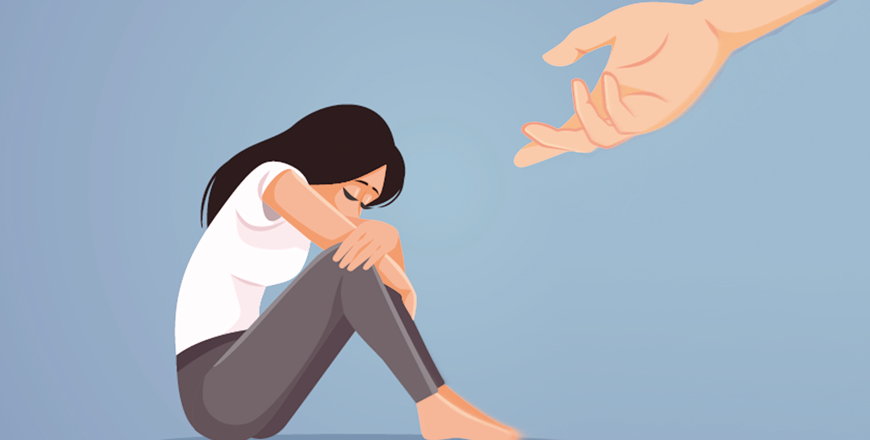You are here
Knowing signs of suicide could save a life
By Sara Mahdawi , Family Flavours - Oct 16,2022 - Last updated at Oct 16,2022

Photo courtesy of Family Flavours magazine
According to Jordan’s National Institute of Forensic Medicine, about 600 people attempted suicide in Jordan in 2021. It isn’t easy to imagine what leads a person to contemplate ending their life. In many cases, suicide can be prevented. Learn the risk factors and warning signs.
What can influence a person’s decision to end their life
•Depression and mood disorders: People with depression may report feeling like they’ve lost the ability to imagine a happy future or remember a happy past. Emotional pain can become unbearable. And death seems like the only way to stop it. Death is not their goal, however; ending the pain is
•Trauma- and stressor-related disorders: This occurs when an individual has difficulty coping with or adjusting to a recent stressor; these events are significant enough to pose a real or imagined threat. A person can feel stuck in the event, It’s not unusual for some people to experience suicidal thoughts. Being surrounded by reminders and flashbacks can take its toll, though. Sometimes, fear and anxiety may feel overwhelming
•Substance use: Alcohol and drug abuse are second to depression as the most frequent risk factors for suicidal thoughts and attempts. The risks increase if substance use co-occurs with mood disorders or trauma, turning to drugs or alcohol as coping mechanisms. Drugs and alcohol can influence a person who is feeling suicidal, making them more impulsive and likely to act upon their urges than they would be while sober
•Chronic pain and illness: It is common to fall into a bad mental state when dealing with severe physical pain daily. Chronic pain can also lead to disruption in a person’s life, such as unemployment, isolation and sleep disturbances which can contribute to suicidal thoughts or attempts
•A cry for help: Suicide attempts are not a cry for attention but a cry for help. It is a way to demonstrate to the world just how much a person is hurting. Sadly, these cries for help may end a person’s life if they misjudge the lethality of the suicide tool. Unfortunately, even though suicide is among the leading causes of death, people still fear asking for help or seeking professional treatment due to the stigma toward suicide, especially in Arab societies.
Global stats
•One million people die from suicide each year, according to the World Health Organisation
•Suicide is among the top 20 leading causes of death worldwide, with more deaths due to suicide than to malaria, breast cancer or war and homicide.
How to help someone at risk of suicide
•Paying attention to warning signs of suicide. Most suicidal individuals give warning signs or signals of their intentions. These warning signs include talking about suicide, seeking lethal means, preoccupation with death, feeling helpless, self-loathing, self-hatred, getting affairs in order, saying goodbye, withdrawing from others, self-destructive behaviours and a sudden sense of calm
•Offering help and support: The best way to help a friend or family member is by providing an attentive, empathetic listening ear. Let them know that they’re not alone and that you care
•Getting professional help: Do your best to make sure that they receive professional help
•Following up on treatment, such as ensuring they attend their psychotherapy sessions and take their medications if prescribed by a psychiatrist
•Removing potential means of suicide, such as pills, knives, razors or firearms. If the person is likely to take an overdose, keep medications locked away or administer only as needed
•Continuing your support, even if the suicidal crisis has passed, keep checking on your loved one. Someone can suffer from depression and suicidal thoughts without you knowing. Even if it appears like they have everything to live for, it probably doesn’t feel that way to them. So always remember to be supportive and kind to your loved ones.
By Sara Mahdawi
Clinical Psychologist
Reprinted with permission from Family Flavours magazine
Related Articles
AMMAN — From 2014 to 2018, 605 cases of suicide were recorded in Jordan, with the figure exponentially increasing each year, according to fi
AMMAN — The rate of suicides has been on the rise in Jordan since 2011, the Sisterhood Is Global Institute (SIGI) said on Tuesday, citing fi
Ghadeer HabashInternationally Certified Career Trainer Is your job or daily routine causing you stress?


















